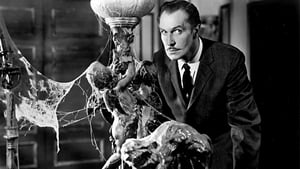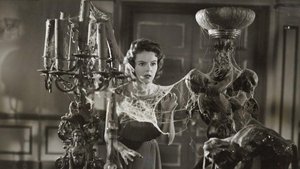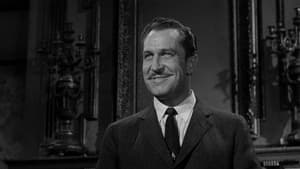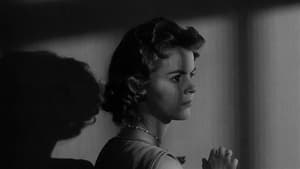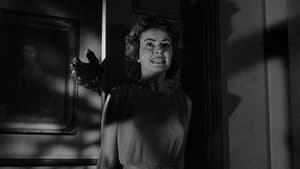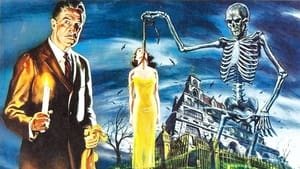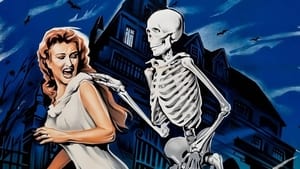Contact: info@alwanfilm.com
Video Sources 0 Views
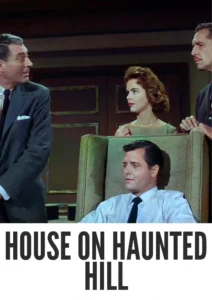
Synopsis
House on Haunted Hill 1959 Colorized Review: A Terrifying Thriller in Living Color

Introduction
In the realm of classic cinema, where shadows dance and suspense reigns supreme, few films evoke the spine-tingling thrills quite like House on Haunted Hill (1959). Directed by the master of macabre, William Castle, this iconic horror film has carved its place in the annals of cinematic history. Now, with the advent of early colorization techniques, audiences have the opportunity to experience the terror of House on Haunted Hill in a whole new light. Join us as we journey through the eerie corridors of this haunted mansion and explore the impact of colorization on its chilling narrative.
Check The Full Colorized Movies List
Check Our Colorized Movies Trailer Channel
Understanding House on Haunted Hill 1959 Colorized: Director, Cast, and Genre
William Castle, known for his innovative approach to horror filmmaking, helmed House on Haunted Hill with a keen eye for suspense and spectacle. The film stars the inimitable Vincent Price in the role of Frederick Loren, a charismatic millionaire who invites a group of strangers to spend the night in a supposedly haunted mansion. Alongside Price, the cast includes genre stalwarts like Carol Ohmart, Richard Long, and Elisha Cook Jr., each delivering performances that add layers of tension to the unfolding mystery. House on Haunted Hill deftly blends elements of horror, suspense, and psychological thriller, cementing its status as a classic of the genre.
Exploring the World of House on Haunted Hill 1959 Colorized: Plot and Characters
Set within the foreboding confines of the titular mansion, House on Haunted Hill unfolds as Frederick Loren offers $10,000 to each guest who can survive the night within its walls. As the evening progresses, tensions mount, and the true nature of the house’s hauntings is gradually revealed. Amidst the eerie atmosphere and ghostly apparitions, the characters’ dark secrets come to light, leading to a series of shocking twists and turns. At the heart of the story lies the enigmatic figure of Frederick Loren, whose motives remain shrouded in mystery until the film’s climactic conclusion.
The Art of Film Colorization
Film colorization has long been a contentious topic in the world of cinema, with purists arguing that it detracts from the integrity of the original black-and-white films. However, when executed with care and attention to detail, colorization can breathe new life into classic works, allowing audiences to experience them in a fresh and engaging manner. Early colorization techniques sought to replicate the visual richness of Technicolor films, using a combination of hand-painting and digital processing to add color to monochromatic footage.
Early Colored Films: A Brief History
The history of colored films dates back to the early experiments of filmmakers seeking to enhance the visual appeal of their works. From the hand-tinted films of the silent era to the emergence of Technicolor in the 1930s, colorization has been an ongoing evolution in the art of cinema. By the 1950s, advances in color film technology had paved the way for a new era of filmmaking, with directors embracing vibrant palettes to bring their stories to life.
House on Haunted Hill 1959 and Its Early Colored Version
The decision to release House on Haunted Hill (1959) in a colorized format marks a bold departure from its original presentation in black and white. While some may argue that colorization alters the film’s intended aesthetic, others view it as an opportunity to enhance the viewing experience and attract new audiences. In the case of House on Haunted Hill, colorization serves to accentuate the film’s atmospheric visuals, immersing viewers in the eerie ambiance of the haunted mansion.
The Debate Over Film Colorization
The debate over film colorization rages on, with proponents touting its ability to breathe new life into classic works and make them more accessible to modern audiences. However, detractors argue that colorization diminishes the artistic integrity of the original films, altering the director’s intended vision. As technology continues to advance, the controversy surrounding film colorization shows no signs of abating, leaving filmmakers and audiences alike to grapple with questions of authenticity and artistic interpretation.
Examining House on Haunted Hill 1959 as an Early Colored Film
Viewing House on Haunted Hill (1959) in its early colored iteration offers a unique perspective on the film’s visual and thematic elements. The addition of color serves to amplify the eerie atmosphere of the haunted mansion, heightening the sense of dread and suspense. From the blood-red hues of the ghostly apparitions to the sickly pallor of the characters’ faces, colorization enhances the film’s unsettling imagery, drawing viewers deeper into its nightmarish world.
Influence and Legacy: House on Haunted Hill 1959 Colorized’s Impact on Cinema
House on Haunted Hill (1959) has left an indelible mark on the horror genre, inspiring countless filmmakers and influencing subsequent generations of storytellers. Its innovative use of suspense and visual effects set a new standard for psychological thrillers, paving the way for future classics like Psycho and The Haunting. Moreover, the film’s enduring popularity has spawned a franchise of sequels, remakes, and spin-offs, attesting to its lasting impact on popular culture.
Director’s Cinematic Legacy: Beyond House on Haunted Hill 1959 Colorized
William Castle’s legacy extends far beyond House on Haunted Hill (1959), encompassing a diverse body of work that spans multiple genres and styles. From cult classics like The Tingler to mainstream successes like Strait-Jacket, Castle’s films continue to captivate audiences with their blend of horror, humor, and spectacle. As a pioneer of gimmick-driven filmmaking, Castle’s influence can be seen in the work of contemporary directors who seek to engage audiences through immersive and interactive storytelling.
Themes Explored in House on Haunted Hill 1959 Colorized
At its core, House on Haunted Hill (1959) is a meditation on the nature of fear and the power of the human psyche. The film explores themes of guilt, paranoia, and the supernatural, weaving a tapestry of terror that resonates with audiences to this day. Through its chilling narrative and unforgettable imagery, House on Haunted Hill invites viewers to confront their deepest fears and confront the darkness that lurks within.
Reception and Controversy Surrounding House on Haunted Hill 1959 Colorized
Upon its release, House on Haunted Hill (1959) received mixed reviews from critics, with some praising its inventive premise and atmospheric visuals, while others derided its reliance on cheap thrills and gimmicks. However, over time, the film has come to be regarded as a cult classic, revered for its campy charm and enduring appeal. The decision to release a colorized version of House on Haunted Hill sparked controversy among purists, but ultimately, the film’s status as a beloved classic remains unscathed.
Where to Watch House on Haunted Hill 1959 Colorized Online
For those eager to experience the terror of House on Haunted Hill (1959) firsthand, the film is readily available on popular streaming platforms such as Netflix, Amazon Prime, and Hulu. Whether viewed in its original black-and-white format or the newly colorized version, House on Haunted Hill promises to deliver a spine-tingling experience that will haunt viewers long after the credits roll.
FAQs About House on Haunted Hill 1959 Colorized
- Why was House on Haunted Hill (1959) chosen for colorization?
- The decision to colorize House on Haunted Hill was driven by a desire to introduce the film to a new generation of viewers and enhance its visual impact.
- Does the colorized version alter the film’s intended atmosphere?
- While purists may argue that colorization detracts from the film’s original aesthetic, others contend that it adds a new dimension to the viewing experience, enriching the film’s atmosphere and mood.
- Is House on Haunted Hill (1959) suitable for audiences of all ages?
- While the film is generally regarded as suitable for mature audiences, parents should exercise caution when viewing it with younger viewers due to its intense themes and scenes of suspense and horror.
Conclusion
As we bid farewell to the eerie halls of House on Haunted Hill (1959), one thing remains abundantly clear: this timeless classic continues to captivate and terrify audiences with its chilling tale of suspense and supernatural intrigue. Whether viewed in its original black-and-white format or the newly colorized version, House on Haunted Hill stands as a testament to the enduring power of cinematic storytelling to thrill and entertain. So dim the lights, gather close, and prepare for a journey into the heart of darkness, where fear reigns supreme and nightmares come to life.
